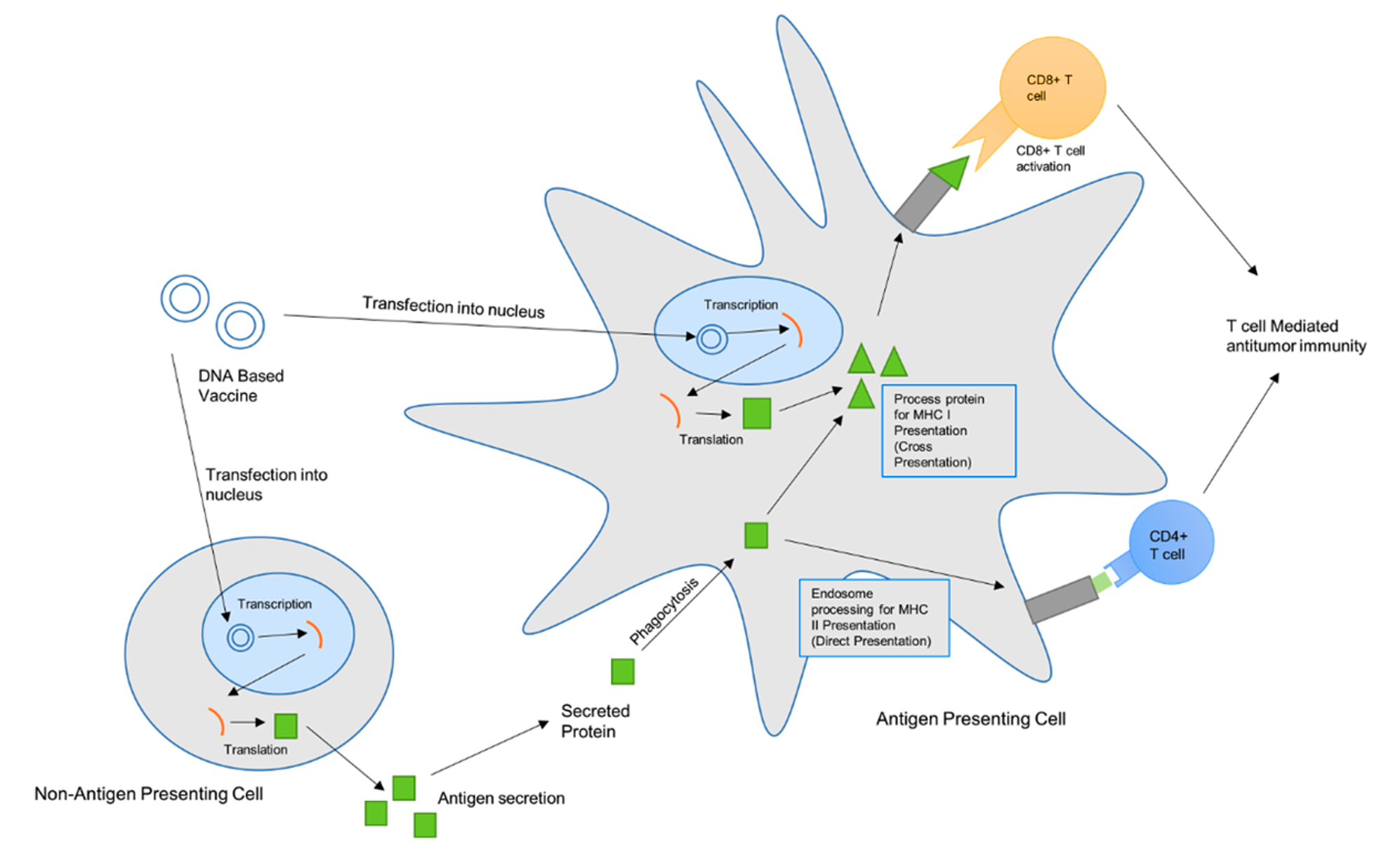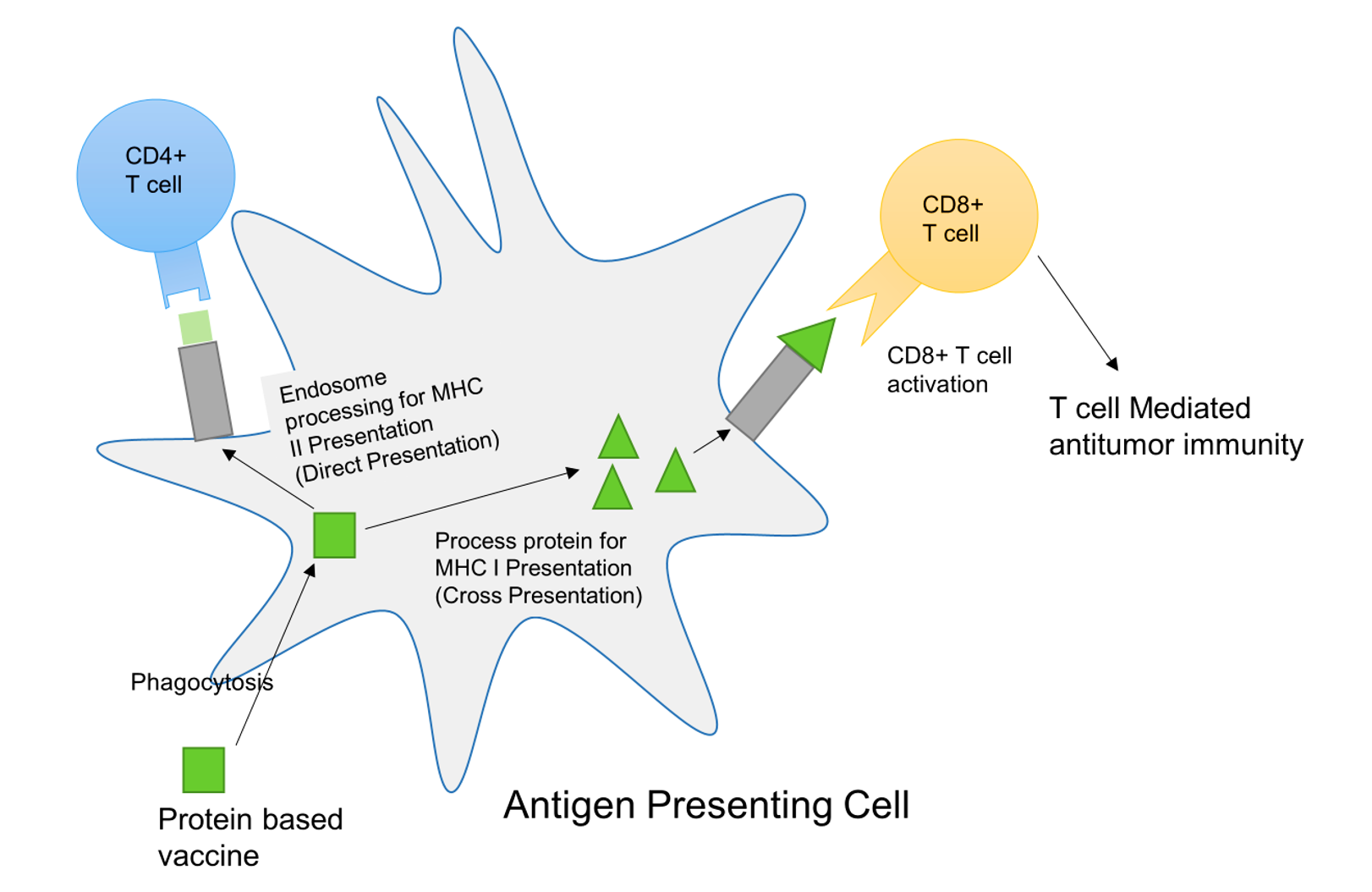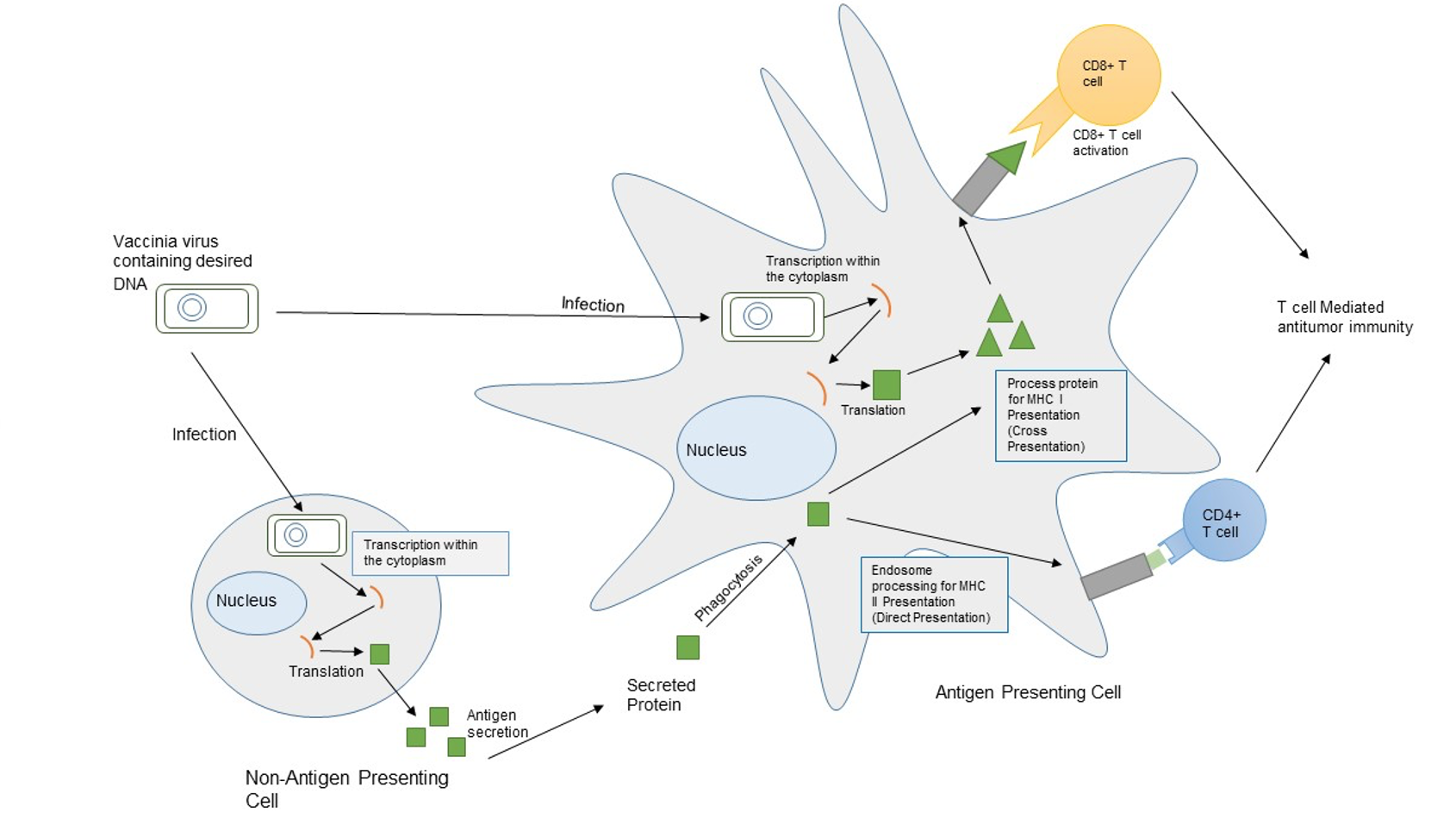PRIMER ON VACCINE PLATFORMS USED BY PAPIVAX
How do DNA vaccines Work?

Upon intramuscular injection of the DNA vaccine, a local antigen presenting cell takes up the plasmid DNA vaccine and it can then reach the nucleus. Within the nucleus, the DNA is transcribed into RNA encoding the viral antigen. The RNA is then transported to the cytoplasm of the cell, where it undergoes translation to become the protein antigen. The protein is then processed and presented by the cell on HLA class I (MHC class I in mice). Once presented by HLA class I on the antigen presenting cell surface to a reactive CD8+ T cell, CD8+ T cells are then activated and primed to recognize the antigen expressing infected cells or tumor cells.
A non-antigen presenting cell e.g. muscle cell, can also take up the injected DNA vaccine so that the DNA enters its nucleus. Within the nucleus, the DNA is transcribed into RNA encoding the viral antigen. The RNA is then transported to the cytoplasm of the cell, where it undergoes translation to become the protein antigen. The protein is then secreted from the cells and taken up by antigen-presenting cells to activate antigen-specific CD4+ T helper cells through an MHC/HLA class II cross presentation pathway.
How do Protein-based vaccines work?

After injection into the muscle, the protein vaccine is taken into the cytoplasm of target antigen presenting cells via phagocytosis. Once inside the cytoplasm, the protein can be presented via MHC/HLA class I and II to reactive T cells. If via MHC class II presentation, the protein is directly presented for CD4+ T helper cell activation. If via MHC class I presentation, the protein is then processed into peptides and cross-presented for CD8+ T cell activation.
How do recombinant vaccinia vaccines work?

An antigen presenting cell may be infected with the injected vaccinia virus vaccine. Once infected, the genetic material within the virus is transported inside the cytoplasm of the infected cell. Within the cytoplasm, the viral DNA is transcribed into RNA. The RNA is then transported to the ribosome of the cell, were it undergoes translation to become the protein antigen. The protein is then processed and presented by the cell. Once presented by the cell, CD8+ and CD4+ T cells are then activated and primed to recognize the antigen.
A non-antigen presenting cell may also be infected with the vaccinia virus vaccine. Once infected, the genetic material of the virus is transported inside the cytoplasm of the infected cell. Within the cytoplasm, the viral DNA is transcribed into RNA. The RNA is then transported to the ribosome of the cell, were it undergoes translation to become the protein antigen. The protein is then released from the dying infected cell and taken up by antigen presenting cells for cross presentation to active antigen-specific CD8+ T cells via MHC/HLA class I, and direct presentation via MHC/HLA class II to CD4+ helper cells.